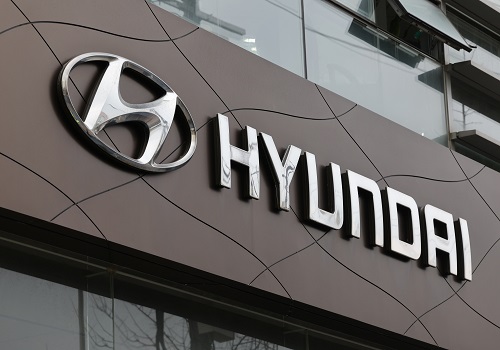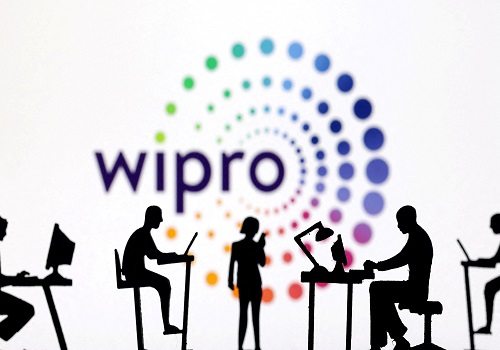Cottoncandy trading range for the day is 57660-57720 - Kedia Advisory

Gold
Gold prices settled up by 0.82% at 71,777, driven by signals from Federal Reserve Chair Jerome Powell that the central bank may soon start easing interest rates. In his speech at the Jackson Hole Central Bank Symposium, Powell indicated that the upside risks to inflation have diminished, while risks to the labor market have increased. Although inflation concerns have subsided, Powell emphasized that the Fed will continue to closely monitor economic conditions. The optimistic tone of Powell’s speech, suggesting that the Fed could manage inflation while supporting economic growth, contributed to the rally in gold prices. Further bolstering the market's expectations for a potential rate cut was Boston Fed President Susan Collins' comments, signaling her support for easing monetary policy soon. This anticipation of a rate-cutting cycle provided a strong upward push for gold, as lower interest rates tend to benefit the non-yielding precious metal. However, a surge in gold prices dampened demand in major Asian markets, with dealers offering deeper discounts to attract buyers. The World Gold Council noted that India's gold demand fell by 5% in the June quarter, but consumption is expected to rebound in the second half of 2024 due to lower import taxes and favorable monsoon rains. From a technical perspective, the gold market is experiencing short covering, with open interest declining by 1.48% to 16,856 contracts as prices rose by 583 rupees. Gold is currently supported at 71,410, with a potential test of 71,035 if this level is breached. On the upside, resistance is expected at 72,050, and a move above this could lead to prices testing 72,315.
Trading Ideas:
* Gold trading range for the day is 71035-72315.
* Gold gains as Fed’s Powell signals that the central bank is ready to start easing interest rates.
* Fed’s Powell said that the upside risk to inflation has diminished and risks to the labor market have grown.
* A rally in gold prices stifled demand in major Asian hubs, with dealers offering deeper discounts to charm buyers
Silver
Silver prices surged by 1.76% to settle at 85,211, driven by signals from Federal Reserve Chairman Jerome Powell that the central bank is likely to cut interest rates in its upcoming September meeting. Powell's remarks at the Jackson Hole Economic Symposium emphasized a cooling U.S. labor market, following softer jobs data from July and recent downward revisions to payroll figures. He also expressed growing confidence that inflation is moving towards the Federal Reserve’s 2% target, suggesting that it may be time to shift towards a less restrictive monetary policy. This dovish stance was further supported by comments from other Fed officials, including Philadelphia Fed President Patrick Harker and Kansas City Fed President Jeffrey Schmid, who both indicated a preference for gradual and well-signaled rate cuts. On the geopolitical front, continued conflict in the Gaza Strip added to the uncertainty, potentially driving safe-haven demand for silver. In addition, India's silver imports are on track to nearly double this year, driven by strong demand from solar panel and electronics manufacturers, as well as investors looking for better returns compared to gold. India's imports jumped to 4,554 tons in the first half of 2024, up significantly from 560 tons during the same period last year. This increase in demand could further support global silver prices, which are nearing their highest levels in over a decade. Technically, the market is experiencing short covering, with open interest dropping by 8.84%. Silver is currently supported at 84,295, with additional support at 83,385. On the upside, resistance is expected at 85,730, with a potential test of 86,255 if prices break above this level.
Trading Ideas:
* Silver trading range for the day is 83385-86255.
* Silver gains as Fed chairman Powell clearly signals rate cut in September
* The Chairman noted that the US labor market is cooling quickly following the softer jobs report from July.
* India's silver imports to double on demand for solar, investment.
Crude oil
Crude oil prices surged by 2.19% to settle at 6,293, as markets weighed the potential responses of major suppliers to the increasing signs of slowing energy demand. The Iraqi Ministry of Oil reaffirmed its commitment to the OPEC+ agreement, pledging to reduce crude oil production to stabilize global markets. Iraq, along with Kazakhstan, has submitted updated compensation plans to OPEC, aiming to make up for overproduction earlier this year by September 2025. Iraq's overproduction between January and July totaled 1.4 million barrels per day (bpd), while Kazakhstan's reached 699,000 bpd. On the demand side, Morgan Stanley revised its global oil demand growth forecast for 2024 downward to 1.1 million bpd from 1.2 million bpd, primarily due to slower economic growth in China, increased adoption of electric vehicles, and a rise in LNG-powered trucks in China. The bank also lowered its Brent price forecast for the fourth quarter of 2024 to $80 per barrel from $85 per barrel. U.S. crude inventories saw a significant decline, with stocks falling by 4.6 million barrels to 426 million barrels in the week ending August 16, according to the Energy Information Administration (EIA). This draw was larger than the expected 2.7 million-barrel decrease. Additionally, gasoline stocks fell by 1.6 million barrels, and distillate inventories dropped by 3.3 million barrels, exceeding market expectations. Technically, the crude oil market is experiencing short covering, with open interest declining by 9.52% to 9,169 contracts as prices rose by 135 rupees. Crude oil is currently supported at 6,184, with a potential test of 6,075 levels if this support is breached. On the upside, resistance is expected at 6,352, and a move above this level could drive prices toward 6,411.
Trading Ideas:
* Crudeoil trading range for the day is 6075-6411.
* Crude oil gains as markets assessed how major suppliers may respond to growing evidence of slowing demand
* U.S. crude stocks, gasoline and distillate inventories fell in the week ending August 16.
* Iraq renews commitment to OPEC+ output cut agreement
Natural gas
Natural gas prices declined by 2.26% to settle at 168.9, driven by forecasts for lower demand this week than previously expected. Despite a hotter-than-normal weather outlook for the next two weeks, which typically increases demand for gas to power air conditioners, the market was pressured by ample storage levels. U.S. natural gas storage remains about 12% above the seasonal norm, with stockpiles totaling 3,299 billion cubic feet (Bcf), which is 221 Bcf higher than last year and 369 Bcf above the five-year average. Although storage builds have been smaller than normal in 13 of the past 14 weeks, the overall supply remains robust. LSEG data shows that U.S. gas output in the Lower 48 states has averaged 102.3 billion cubic feet per day (bcfd) in August, down slightly from 103.4 bcfd in July. The U.S. Energy Information Administration (EIA) also forecasted a larger-than-expected decline in natural gas production this year, attributing it to record-low prices earlier in 2024 that led producers to scale back operations. The EIA now expects natural gas output to average 103.3 bcfd in 2024, down from the previous year's 103.8 bcfd. Meanwhile, U.S. LNG export flows have risen to 12.9 bcfd in August, up from 11.9 bcfd in July, reflecting strong global demand. However, gas consumption is projected to average 89.8 bcfd this year, a slight increase from earlier estimates. Technically, the natural gas market is experiencing long liquidation, with open interest dropping by 20.9%. Support is currently at 167, with further support at 165.1. Resistance is anticipated at 172.1, with a potential test of 175.3 if prices break above this level.
Trading Ideas:
* Naturalgas trading range for the day is 165.1-175.3.
* Natural gas slid on forecasts for lower demand this week than previously expected.
* Despite smaller weekly builds, there was 12% more gas in storage than usual.
* LSEG reported a drop in gas output in the Lower 48 US states to 102.3 bcfd in August.
Copper
Copper prices rose by 1% to settle at 810.95, supported by declining metal inventories and easing concerns about a potential U.S. economic recession. Additionally, signs of improving demand in China have bolstered the market. Inventories in warehouses monitored by the Shanghai Futures Exchange fell by 4.3% from last Friday, reflecting tightening supply. Despite a recent surge in Chinese copper exports, which had initially dampened bullish sentiment and led to a 16% drop from the record highs seen in May, the export momentum seems to be tapering off. In July, outbound shipments fell to 70,000 tons, down from 158,000 tons in June. The global refined copper market showed a surplus of 95,000 metric tons in June, up from 63,000 metric tons in May, according to the International Copper Study Group (ICSG). For the first half of the year, the market recorded a surplus of 488,000 metric tons, significantly higher than the 115,000 metric tons surplus in the same period last year. June’s refined copper output was 2.31 million metric tons, while consumption stood at 2.21 million metric tons. China's unwrought copper imports slid in July, down 2.9% from a year earlier, due to subdued demand and high stock levels. However, for the first seven months of the year, imports were up 5.4% at 3.2 million tons, indicating resilient demand in the world's largest copper consumer. Copper concentrate imports also rose by 9.6% in July, totaling 2.17 million tons. Technically, the copper market is experiencing fresh buying, with open interest increasing by 8.49% to 8,331 contracts as prices rose by 8 rupees. Copper finds support at 806.4, with a potential test of 801.7 if this level is breached. On the upside, resistance is expected at 813.9, and a move above this could drive prices toward 816.7.
Trading Ideas:
* Copper trading range for the day is 801.7-816.7.
* Copper gains supported by falling metal inventories, and demand showing signs of improvement in China.
* Copper inventories in warehouses monitored by the Shanghai Futures Exchange fell 4.3% from last Friday.
* China produced 5.9 million tons of refined copper in the first half of the year.
Zinc
Zinc prices climbed by 1.43% to settle at 269.15, driven by expectations of reduced supply and a seasonal boost in demand in the coming months. The rally was sparked by an agreement among 14 major Chinese zinc smelters to cut production due to falling treatment charges (TCs), which have squeezed profits. Treatment charges for zinc concentrates have dropped to historically low levels amid a tight supply environment. This has already led to production cuts in July and August, with China's zinc output declining for a second consecutive month in July, down by 9.2% from June to 536,000 tons, marking the lowest monthly output in a year. Forecasts suggest that output could be reduced by an additional 30,000 to 40,000 tons per month from September to December, potentially reducing total annual zinc ingot output by 3-4%. In addition, open interest on the Shanghai exchange for the zinc contract has risen for three consecutive days, increasing by 12% to 126,000 lots, equivalent to 630,000 tons, indicating robust investor interest. The global zinc market surplus also narrowed significantly to 8,700 metric tons in June from 44,000 tons in May, according to the International Lead and Zinc Study Group (ILZSG). For the first half of 2024, the global surplus stood at 228,000 tons, down from 452,000 tons in the same period last year. Technically, the market is under fresh buying, with open interest surging by 38.5%. Zinc has immediate support at 267.4, with further support at 265.6. On the upside, resistance is expected at 270.2, with a potential test of 271.2 if prices break above this level. The outlook for zinc remains bullish in the short term, supported by supply constraints and increased demand expectations.
Trading Ideas:
* Zinc trading range for the day is 265.6-271.2.
* Zinc climbed underpinned by prospects of reduced supply and a seasonal uplift in demand in the coming months.
* Smelters have already curbed production in July and August, with China's zinc output falling for a second straight month in July
* Treatment charges for zinc concentrates have fallen to historical lows amid tight supply.
Aluminium
Aluminium prices surged by 2.02% to settle at 232.25, buoyed by tight supply of raw materials and expectations of a potential U.S. interest rate cut next month. The strong demand for alumina, coupled with a limited supply of bauxite, has underpinned aluminium prices, pushing them to a more than six-week high on the London Metal Exchange (LME). The discount of LME cash aluminium to the three-month contract narrowed to $17.08 per ton, the smallest since May 1, indicating a tightening in nearby supply. LME aluminium inventory has decreased by 22% over the past three months, reaching 877,950 tons, the lowest level since May 8. China's role in the aluminium market remains significant, with the country exporting 146,708 tons of alumina in July, a 9.6% increase from the previous year. The majority of these exports, 92.5%, were directed to Russia. In addition, China's primary aluminium imports for July totaled 129,898 tons, up 11.5% year-on-year, reflecting robust demand. Despite recent price declines, China's aluminium output in July rose by 6% year-on-year to 3.68 million metric tons, the highest monthly output since 2002. This increase is attributed to new projects in Inner Mongolia and continued strong production in other regions. Global aluminium output also saw a rise, with July production up 2.4% year-on-year to 6.194 million metric tons, driven by increases in both China and the rest of Asia. Technically, the aluminium market is experiencing fresh buying, with open interest rising by 32.71% to 2,986 contracts as prices increased by 4.6 rupees. Aluminium finds support at 229.7, with a potential test of 227 if this level is breached. On the upside, resistance is expected at 233.9, and a move above this could drive prices toward 235.4.
Trading Ideas:
* Aluminium trading range for the day is 227-235.4.
* Aluminium inched higher buoyed by tight supply of raw material and expectation of a U.S. interest rate cut next month.
* The discount of LME cash aluminium to the three-month contract tightened to $17.08 a ton, indicating tightening nearby supply.
* LME aluminium inventory has dropped 22% in three months to 877,950 tons, the lowest since May 8.
Cotton
Cotton candy prices edged up by 0.38% to settle at 57,690, supported by a decline in cotton acreage and concerns over tight supplies. The current kharif cropping season has seen a reduction in cotton acreage by around 9%, down to 110.49 lakh hectares compared to 121.24 lakh hectares last year. The Cotton Association of India (CAI) estimates this year's acreage at approximately 113 lakh hectares, significantly lower than the 127 lakh hectares recorded in the previous year. The shift of farmers to other crops, driven by lower yields and high production costs, has contributed to this decline. Additionally, the cotton balance sheet for next year is expected to be tight, with higher exports to Bangladesh reducing available stocks. India's cotton exports have surged from 15 lakh bales to 28 lakh bales due to strong demand from Bangladesh, further straining the supply. As per CAI estimates, spinning mills currently hold 25 lakh bales, ginners have 15 lakh bales, and the Cotton Corporation of India possesses 20 lakh bales. With another 10 lakh bales expected to arrive during August-September, a total of 70 lakh bales are available for consumption until September 30. However, any delay in the new crop could create a tighter supply situation for mills. Globally, the 2024/25 cotton balance sheet shows reductions in production, consumption, and ending stocks, with world production down by about 2.6 million bales due to lower output in the U.S. and India. Technically, the cotton candy market is experiencing short covering, with open interest decreasing by 0.57% to 174 contracts as prices rose by 220 rupees. Cotton candy finds support at 57,680, with a potential test of 57,660 if this level is breached. On the upside, resistance is expected at 57,710, and a move above this could drive prices toward 57,720.
Trading Ideas:
* Cottoncandy trading range for the day is 57660-57720.
* Cotton prices gained as Cotton acreage trails by 9% at 110 lh
* CAI predicts acreage to be around 113 lh this year, up from 127 lh in the previous year.
* Global cotton production cut by 2.6 million bales; lower in US, India.
* In the global 2024/25 cotton balance sheet, beginning stocks, production and consumption are increased.
Turmeric
Turmeric prices fell by 4.35% to settle at 14,520, driven by limited demand as buyers remain hesitant to make purchases. Export prospects are further clouded by expected volatility in Bangladesh, adding pressure to the market. In Indonesia, dry weather has accelerated harvesting, currently at its peak, with many farmers opting to sell turmeric in its wet stage, leading to reduced production. Additionally, increased acreage and low export demand could result in further price declines. However, the downside is somewhat limited as farmers are holding back stocks, anticipating a price rise. Turmeric sowing in key regions like Erode has reportedly doubled compared to last year. In Maharashtra, Telangana, and Andhra Pradesh, sowing is estimated to be 30-35% higher than the previous year. Last year, turmeric was sown on about 3-3.25 lakh hectares, which is expected to increase to 3.75-4 lakh hectares this year. Despite last year's low sowing and unfavorable weather, which resulted in an estimated production of 45-50 lakh bags, there was also an outstanding stock of 35-38 lakh bags. Even with increased sowing, the upcoming turmeric crop is expected to be around 70-75 lakh bags, with outstanding stocks likely to be zero, potentially leading to less availability than consumption in 2025. Turmeric exports during April-June 2024 dropped by 19.52% compared to the same period in 2023, while imports rose significantly by 485.40%. In Nizamabad, a major spot market, prices dropped by 0.47% to 15,753.85 rupees. Technically, the market is under long liquidation, with open interest dropping by 2.74%. Support is currently at 14,182, with further support at 13,846. Resistance is expected at 15,072, with a potential test of 15,626 if prices move higher.
Trading Ideas:
* Turmeric trading range for the day is 13846-15626.
* Turmeric dropped as demand remains limited, as buyers are reluctant to make purchases.
* Pressure also seen amid news of increased sowing.
* In Indonesia, dry weather has accelerated harvesting, which is currently at peak levels.
* In Nizamabad, a major spot market, the price ended at 15753.85 Rupees dropped by -0.47 percent.
Jeera
Jeera prices increased by 0.22% to settle at 25,325, driven by strong domestic and export demand alongside tight global supplies. The upward momentum was supported by farmers holding back their stocks, anticipating better prices in the near future. However, the upside remained limited due to expectations of higher production this season. Jeera production in India is projected to increase by approximately 30% this season, reaching 8.5-9 lakh tonnes, driven by a substantial rise in the cultivation area. In Gujarat, the sowing area has increased by 104%, while in Rajasthan, it has risen by 16%. Globally, the production of jeera has seen significant increases, particularly in China, where output has surged to 55-60 thousand tons, compared to 28-30 thousand tons previously. Other major producers, such as Syria, Turkey, and Afghanistan, have also increased their production due to high prices in the prior season. Turkey is expected to produce 12-15 thousand tons, and Afghanistan’s output could potentially double, contingent on favorable weather conditions. As these new supplies enter the market, global cumin prices are likely to face downward pressure. Additionally, a reduction in export trade has contributed to the recent price drop, indicating a shift in global market dynamics. Despite the potential for higher production, the export market is expected to perform well, with estimates suggesting a significant increase in cumin exports, potentially reaching 14-15 thousand tonnes by February 2024. From a technical perspective, the jeera market is currently experiencing short covering, with open interest dropping by 0.26% to settle at 2,298 contracts as prices rose by 55 rupees. Jeera finds support at 24,990, with a potential test of 24,650 if this level is breached. On the upside, resistance is expected at 25,730, and a move above this level could drive prices toward 26,130.
Trading Ideas:
* Jeera trading range for the day is 24650-26130.
* Jeera gains amid robust domestic and export demand besides tight global supplies.
* China's cumin output soared to over 55-60 thousand tons from the previous 28-30 thousand tons.
* Turkey anticipates producing 12-15 thousand tons, while Afghanistan's output could double.
* In Unjha, a major spot market, the price ended at 25479.45 Rupees dropped by -0.03 percent.
Views express by all participants are for information & academic purpose only. Kindly read disclaimer before referring below views.























